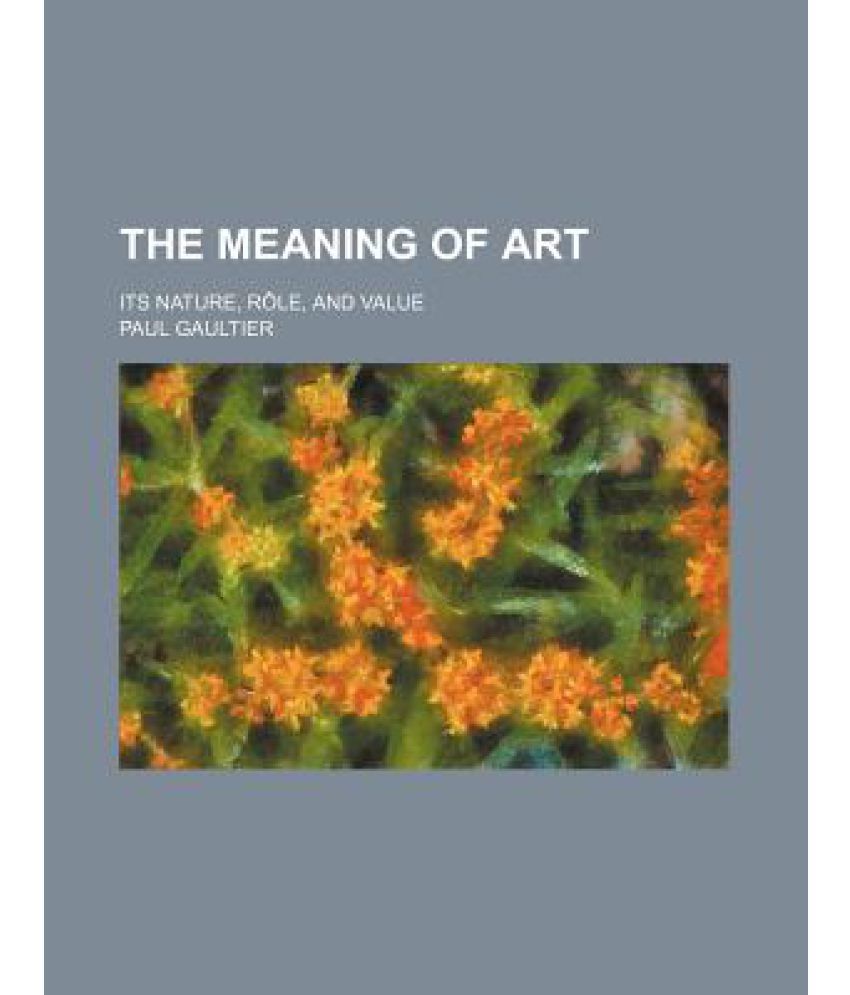Something went wrong. Please refresh the page and try again.
Something went wrong. Please refresh the page and try again.
Notifications can be turned off anytime from settings.
Item(s) Added To cart
Qty.
Something went wrong. Please refresh the page and try again.
Something went wrong. Please refresh the page and try again.
Exchange offer not applicable. New product price is lower than exchange product price
Please check the updated No Cost EMI details on the payment page
Exchange offer is not applicable with this product
Exchange Offer cannot be clubbed with Bajaj Finserv for this product
Product price & seller has been updated as per Bajaj Finserv EMI option
Please apply exchange offer again
Your item has been added to Shortlist.
View AllYour Item has been added to Shopping List
View AllSorry! The Meaning of Art; Its Nature, Role, and Value is sold out.


You will be notified when this product will be in stock
Learn More about the Book
This historic book may have numerous typos, missing text, images, or index. Purchasers can download a free scanned copy of the original book (without typos) from the publisher. 1914. Not illustrated. Excerpt: ... CHAPTER III THE MORALITY OF ART Art has often been accused of immorality, or, at least, held in suspicion by serious men on religious or moral grounds. From Mahomet, who forbade paintings and sculptures, to Jean Jacques Rousseau and Tolstoi, who denounce the fine arts as servants of luxury and pleasure, not to go back to the Roman Seneca, the iconoclasts in the Orient, the Vaudois, the Albigenses, the Hussites in the Occident, together with Protestants and Jansenists, art has been banished as an influence that corrupts manners and excites the passions. There are still many people who tolerate it only where it makes honourable amends by serving morality and religion. On the other hand, certain philosophers, Hegel and Schopenhauer among them, have not failed to glorify it, representing it as opposed to immorality, as purifying and moralising everything it touches. This is the point approached by the theorists of "art for art's sake." In order to enter intelligently into this debate, we should examine both arguments in the light of the facts, experience, and reason. We should inquire whether art is immoral, and in case it is not, whether it is, on the contrary, positively moral. To this end let us analyse aesthetic emotion, and the effects it produces on us. We can hardly obtain an exact idea of the relations art bears or ought to bear to ethics, without raising the fundamental problem of the morality or immorality of art. I According to some writers, the most famous of whom is M. Brunetiere, art is immoral because it imitates nature, which, they say, is perverse at bottom: "there is no vice of which she does not give us an example, nor any virtue from which she does not dissuade us." Not only does it seem, at first sight, exaggerated to say that nature is...
The images represent actual product though color of the image and product may slightly differ.
Register now to get updates on promotions and
coupons. Or Download App